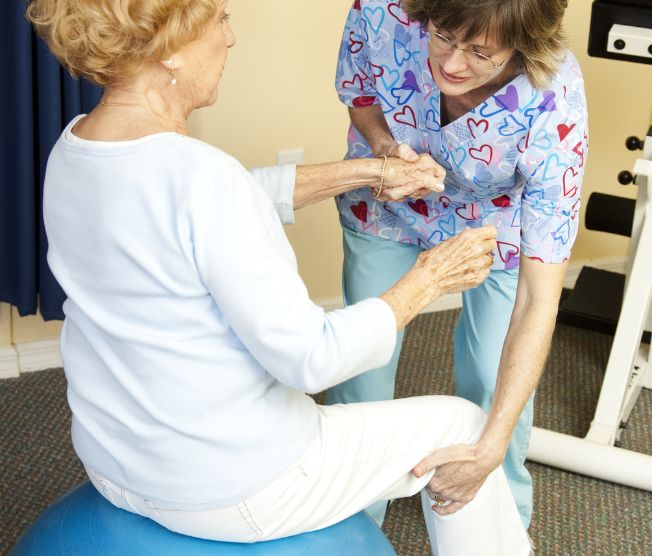 When starting short-term rehabilitation, you’ll meet with many healthcare professionals, including an occupational therapist. In hospitals, acute care and skilled nursing facilities, occupational therapists help you regain skills related to activities of daily living (ADLs).
When starting short-term rehabilitation, you’ll meet with many healthcare professionals, including an occupational therapist. In hospitals, acute care and skilled nursing facilities, occupational therapists help you regain skills related to activities of daily living (ADLs).
Occupational therapy plans vary based on each patient’s condition, recovery plan and goals but this approach helps you prepare for recovery beyond short-term rehabilitation, improve quality of life, increase independence and support your mental wellbeing.
If you’re preparing to undergo a procedure that will require short-term rehabilitation for recovery, here’s what you should know about occupational therapy.
Occupational Therapy In the Hospital
First, you will meet with an occupational therapist in an acute care or in-patient hospital setting, before being discharged to short-term rehabilitation. The goal is to help you resume activities of daily living in order to care for yourself and achieve a baseline of independence.
An occupational therapist will also make care recommendations for short-term rehab, as well as any concerns related to your health condition or activities of daily living.
Occupational Therapy In Short-Term Rehab
Once your stay in a short-term rehabilitation facility begins, you will undergo several hours of occupational therapy a day, up to five days a week.
Treatment starts with a plan developed to boost independence and aid in your recovery. This plan may entail adapting or relearning activities of daily living and may get your family involved. Sessions will be held individually or in groups to improve social interaction.
These sessions continue the therapy you started in the hospital. Specifically, helping you resume a level of functionality and independence, including for activities of daily living (ADL) and getting back to the activities you once enjoyed.
Based on your condition, the plan and subsequent sessions help you:
- Address balance, coordination and range of motion.
- Improve your mobility, including getting out of bed, restoring range of motion and moving around your space with little-to-no assistance.
- Relearn or adapt ADLs related to independence and hygiene, including eating, cooking, dressing, bathing, grooming, using the toilet and managing your finances.
- Get used to ambulatory devices, including walkers and wheelchairs, and how they can aid your recovery as you get back to independent living.
- Learn exercises and use equipment to build up your physical strength, improve range of motion and address how your brain communicates with the rest of your body.
- Develop strategies to prevent falls once you return home.
- Optimize your recovery, including managing contractures that may restrict your range of motion, and focusing on posture to help your body heal better.
- Interact with other residents to regain and strengthen social skills.
- Make appropriate modifications to safely move around the home and drive a car.
What to Expect
During your recovery, occupational therapy will:
- Help you regain or adapt to a new level of functional mobility, such as transferring yourself from a bed to a chair or to the bathroom.
- Instruct you on proper use of a mobility device, even if use will only be temporary.
- Help improve your cognitive health, including attention span and memory.
- Provide recommendations to make your home safer and more conductive to your recovery, including where to install grab bars and ramps.
Occupational therapy provides support during your recovery, offers a roadmap toward independence, focuses on safety, can shorten your stay in short-term rehabilitation and improve recovery outcomes.
Are you in the process of planning your stay in a short-term rehabilitation facility? Contact Avon Health Center to learn how we can oversee your care.
« Why Are Fractures a Concern for Older Adults?

